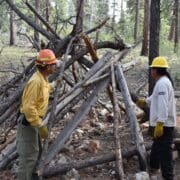Investment Needs of US$35 Trillion by 2030 for Successful Energy Transition
Black Immigrant Daily News
The global energy transition is off-track, aggravated by the effects of global crises. Introduced by IRENA’s Director-General Francesco La Camera at the Berlin Energy Transition Dialogue (BETD) today, the World Energy Transitions Outlook 2023 Preview calls for a fundamental course correction in the energy transition.
A successful energy transition demands bold, transformative measures reflecting the urgency of the present situation. Investment and comprehensive policies across the globe and all sectors must grow renewables and instigate the structural changes required for the predominantly renewables-based energy transition.
The Preview shows that the scale and extent of change falls far short of the 1.5?C pathway. Progress has been made, notably in the power sector where renewables account for 40 percent of installed power generation globally, contributing to an unprecedented 83 per cent of global power additions in 2022.
But to keep 1.5?C alive, deployment levels must grow from some 3,000 gigawatt (GW) today to over 10,000 GW in 2030, an average of 1,000 GW annually. Deployment is also limited to certain parts of the world. China, the European Union and the United States accounted for two-thirds of all additions last year, leaving developing nations further behind.
IRENA’s Director-General Francesco La Camera said, “The stakes could not be higher. A profound and systemic transformation of the global energy system must occur in under 30 years, underscoring the need for a new approach to accelerate the energy transition. Pursuing fossil fuel and sectoral mitigation measures is necessary but insufficient to shift to an energy system fit for the dominance of renewables.”
“The emphasis must shift from supply to demand, towards overcoming the structural obstacles impeding progress. IRENA’s Preview outlines three priority pillars of the energy transition; the physical infrastructure, policy and regulatory enablers and well-skilled workforce, requiring significant investment and new ways of co-operation in which all actors can engage in the transition and play an optimal role.”
The Preview warns that a lack of progress further increases investment needs and calls for a systematic change in the volume and type of investments to prioritise the energy transition.
Although global investment in energy transition technologies reached a new record of USD 1.3 trillion in 2022, yearly investments must more than quadruple to over USD 5 trillion to stay on the 1.5?C pathway. By 2030, cumulative investments must amount to USD 44 trillion, with transition technologies representing 80 per cent of the total, or USD 35 trillion, prioritising efficiency, electrification, grid expansion and flexibility.
Any new investment decisions should be carefully assessed to simultaneously drive the transition and reduce the risk of stranded assets. Some 41 per cent of planned investment by 2050 remains targeted at fossil fuels. Around USD 1 trillion of planned annual fossil fuel investment by 2030 must be redirected towards transition technologies and infrastructure to keep the 1.5?C target within reach.
Furthermore, public sector intervention is required to channel investments towards countries in a more equitable way. In 2022, 85 per cent of global renewable energy investment benefitted less than 50 per cent of the world’s population. Africa accounted for only one percent of additional capacity in 2022. IRENA’s Global Landscape of Renewable Energy Finance 2023 confirms that regions home to about 120 developing and emerging markets continue to receive comparatively little investment.
La Camera said, “We must rewrite the way international co-operation works. Achieving the energy transition requires stronger international collaboration, including collective efforts to channel more funds to developing countries. A fundamental shift in the support to developing nations must put more focus on energy access and climate adaptation. Moving forward, multilateral financial institutions need to direct more funds, at better terms, towards energy transition projects and build the physical infrastructure that is needed to sustain the development of a new energy system.”
IRENA’s World Energy Transitions Outlook (WETO) provides an energy transition pathway in line with Paris Agreement goals, limiting global temperature rise to 1.5?C. The forthcoming 2023 edition will contribute to the first Global Stocktake concluding at COP28 in the United Arab Emirates and will propose effective ways to accelerate progress over the next five years towards 2030.
Donate At Caribbean News Service, we do not charge for our content and we want to keep it that way. We are seeking support from individuals and organisations so we can continue our work & develop CNS further.
NewsAmericasNow.com









